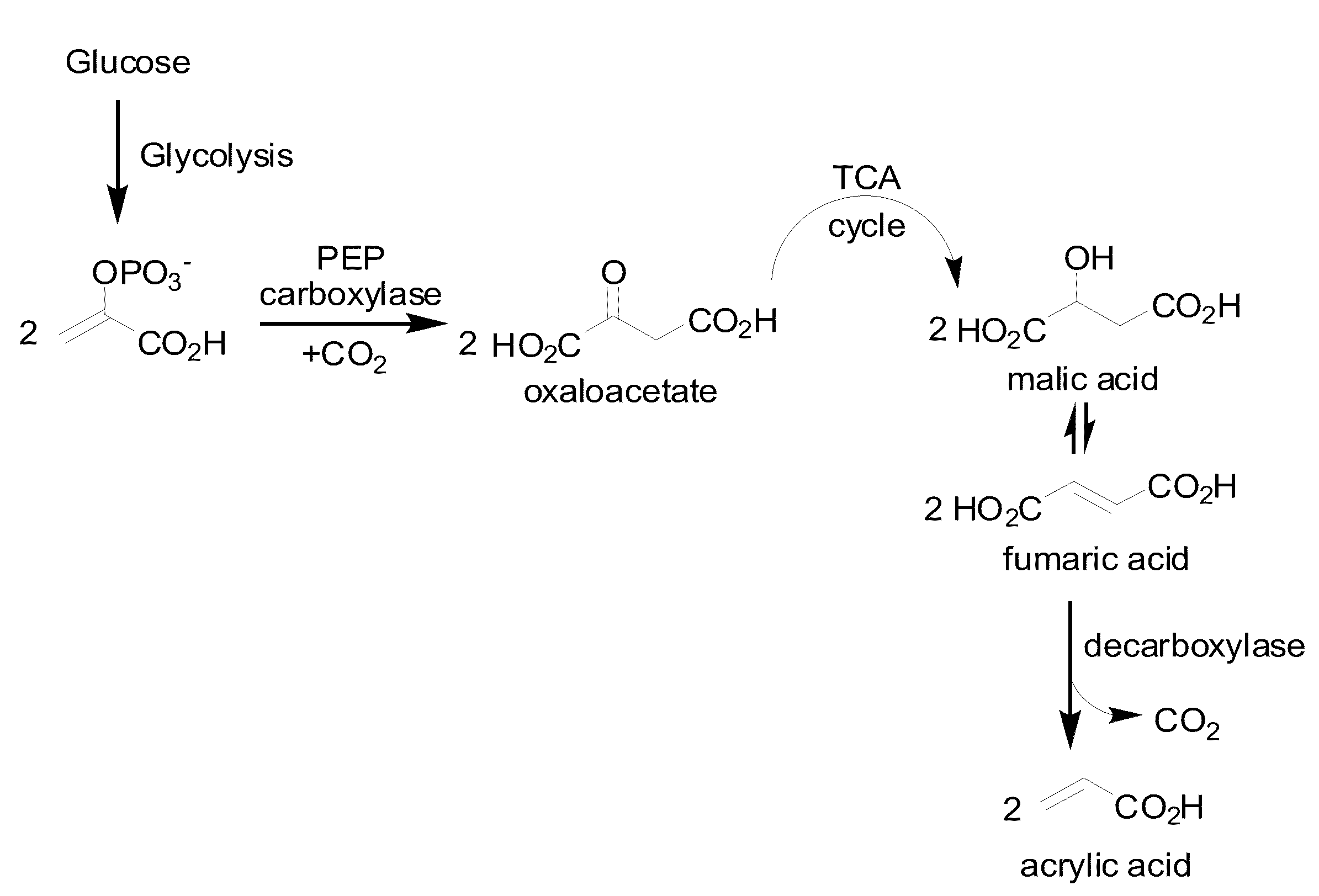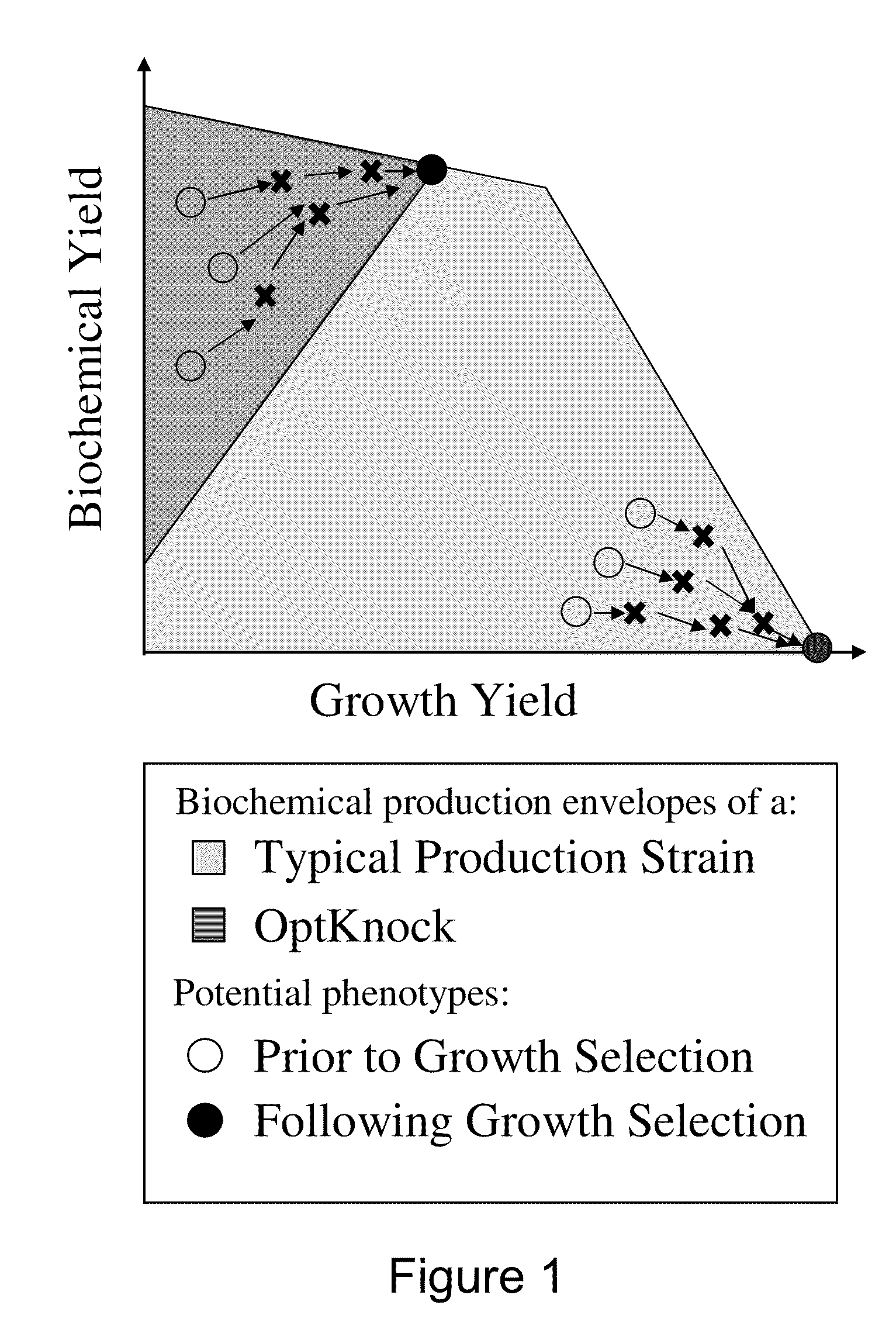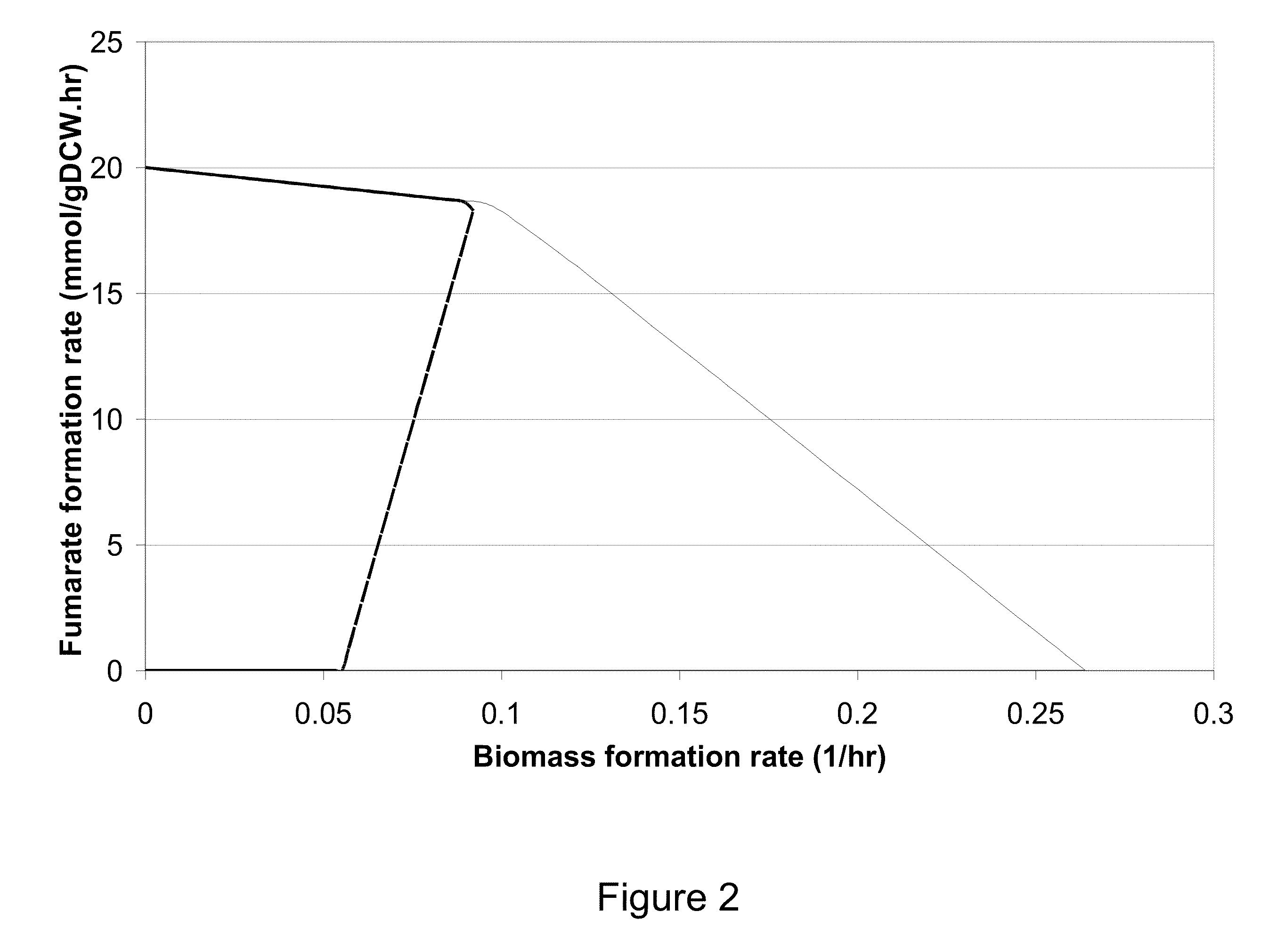Microorganisms and methods for the biosynthesis of fumarate, malate, and acrylate
a technology of microorganisms and biosynthesis methods, applied in the direction of microorganisms, lyases, fungi, etc., can solve the problems of high and volatile prices of petroleum feedstocks, insecure foreign supply chains, and declining reserves, and achieve the effect of increasing the production of fumara
- Summary
- Abstract
- Description
- Claims
- Application Information
AI Technical Summary
Benefits of technology
Problems solved by technology
Method used
Image
Examples
example i
Microorganisms Having Growth-coupled Production of Fumarate
[0329]This Example describes the construction in silico designed strains for the increased production of fumarate in E. Coli.
[0330]Escherichia coli K-12 MG1655 serves as the wild-type strain into which the deletions are introduced. The strains are constructed by incorporating in-frame deletions using homologous recombination via the λ Red recombinase system of Datsenko and Wanner. (Datsenko and Wanner, Proc Natl Acad Sci U.S.A., 97(12):6640-5 (2000).) The approach involves replacing a chromosomal sequence (i.e., the gene targeted for removal) with a selectable antibiotic resistance gene, which itself is later removed. Knockouts are integrated one by one into the recipient strain. No antibiotic resistance markers will remain after each deletion allowing accumulation of multiple mutations in each target strain. The deletion technology completely removes the gene targeted for removal so as to substantially reduce the possibili...
example ii
Microorganisms having Growth-Coupled Production of Fumarate
[0338]This Example describes the construction in silico designed strains for the increased production of fumarate in S. cerevisiae.
[0339]Gene deletions are introduced into wild-type, haploid S. cerevisiae by homologous recombination of the gene interrupted by the KanMX cassette, flanked by loxP sites enabling removal and recycling of the resistance marker (Wach, A., et al., PCR-based gene targeting in Saccharomyces cerevisiae, in Yeast Gene Analysis, M. F. Tuite, Editor. 1998, Academic Press: San Diego.). Starting with a loxP-kanMX-loxP sequence on a plasmid, an artificial construct with this sequence flanked by fragments of the gene of interest will be created by PCR using primers containing both 45-50 bp target sequence followed by a region homologous to the above cassette. This linear DNA will be transformed into wild-type S. cerevisiae, and recombinants will be selected by geneticin resistance. Colonies will be purified...
example iii
[0347]This Example describes the generation of a microbial organism capable of producing acrylate using a decarboxylase metabolic pathway.
[0348]Escherichia coli is used as a target organism to engineer a decarboxylase pathway (FIG. 1), and testing growth and acrylate production from glucose. E. coli provides a good model for developing a non-naturally occurring microorganism capable of producing acrylate, from glucose since it is amenable to genetic manipulation and is known to be capable of producing various products, like ethanol, effectively under anaerobic conditions from glucose.
[0349]To generate an E. coli strain engineered to produce primary alcohol, nucleic acids encoding proteins and enzymes required for the acrylate production pathway via fumarate decarboxylation as described above, are expressed in E. coli using well known molecular biology techniques (see, for example, Sambrook, supra, 2001; Ausubel supra, 1999; Roberts et al., supra, 1989). The pad1...
PUM
| Property | Measurement | Unit |
|---|---|---|
| soluble | aaaaa | aaaaa |
| hardness | aaaaa | aaaaa |
| volume | aaaaa | aaaaa |
Abstract
Description
Claims
Application Information
 Login to View More
Login to View More - R&D
- Intellectual Property
- Life Sciences
- Materials
- Tech Scout
- Unparalleled Data Quality
- Higher Quality Content
- 60% Fewer Hallucinations
Browse by: Latest US Patents, China's latest patents, Technical Efficacy Thesaurus, Application Domain, Technology Topic, Popular Technical Reports.
© 2025 PatSnap. All rights reserved.Legal|Privacy policy|Modern Slavery Act Transparency Statement|Sitemap|About US| Contact US: help@patsnap.com



